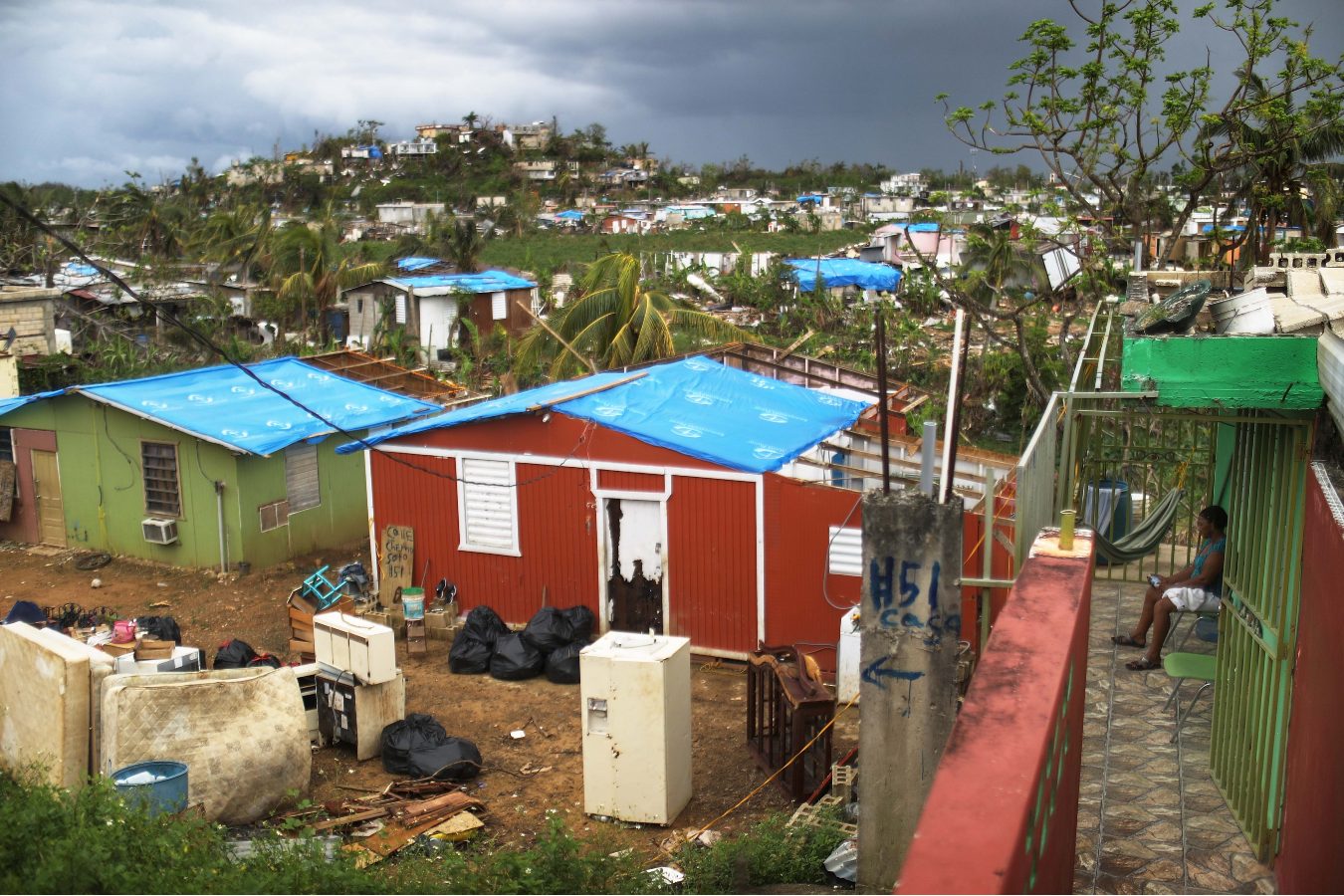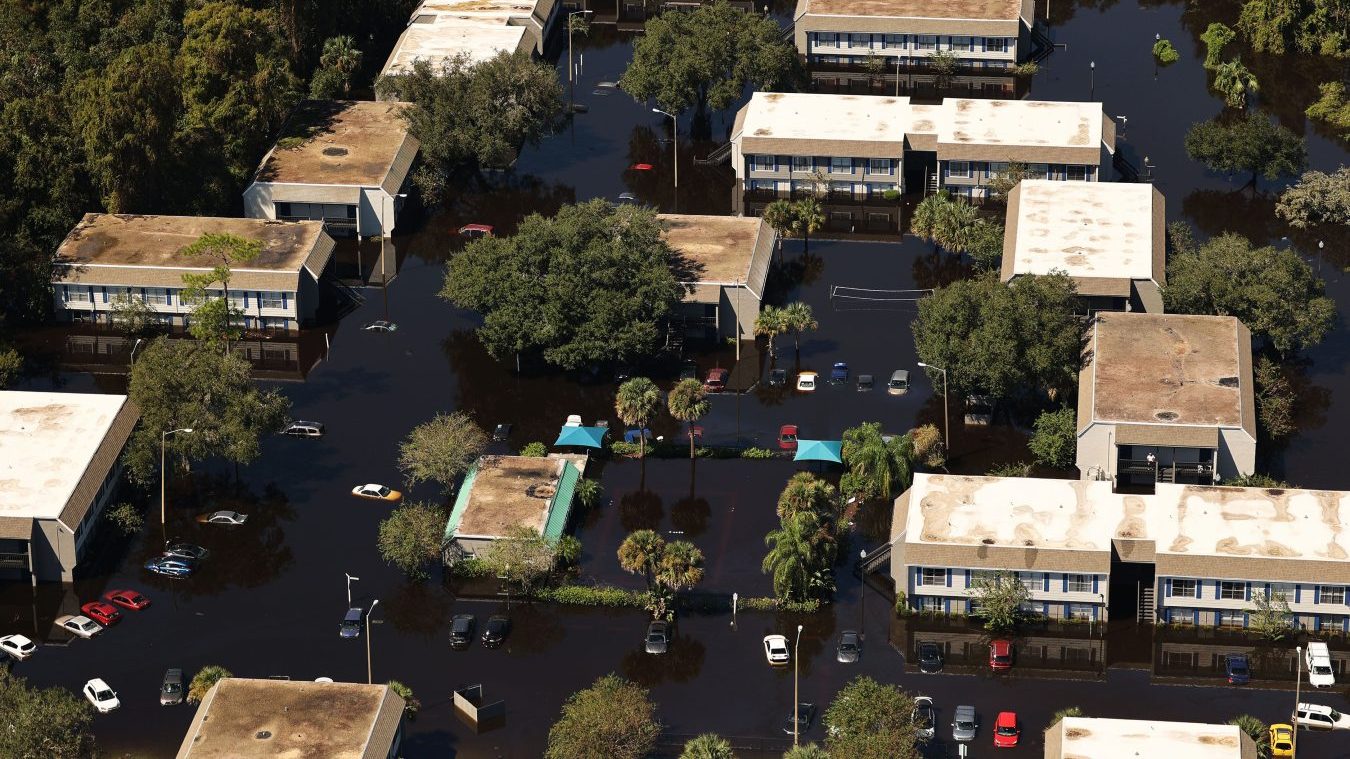When Hurricane Ian hit Central Florida last fall, Milly Santiago already knew what it was like to lose everything to a hurricane, to leave your home, to start over.
For her, that was the outcome of Hurricane Maria, which struck her native Puerto Rico in September 2017, killing thousands of residents and leaving the main island without power for nearly a year.
So in September 2022, nearly five years to the day when Maria tossed her life apart, Santiago was in suburban Orlando, visiting a friend. As torrents of heavy rain battered the roof of her friend’s home, and muddy waters flooded the streets, she realized they were trapped.
And that her life was going to change, again.
“It created such a brutal anxiety in me that I don’t even know how to explain,” she said in Spanish.
In the aftermath of Hurricane Maria, Santiago was one of more than 100,000 Puerto Ricans who left Puerto Rico and relocated to places like Florida, seeking safety, economic opportunities, and a place to rebuild their lives. Only now, with displacement caused by Hurricane Ian, as well as one of the worst housing crises in the country, the stability for Puerto Ricans in hurricane-battered Florida has never felt more at risk. With those like Santiago twice displaced, many are finding their resilience and sense of home tested like never before.

Santiago’s life right before Maria was based in Canóvanas, a town on the outskirts of Puerto Rico’s capital of San Juan. There, she lived with her teenage daughter and son. Hurricane Irma visited first, grazing the United States territory in early September and causing widespread blackouts. When Hurricane Maria hit on September 20, it ultimately took the lives of more than 4,000 Puerto Ricans, making it the most devastating tropical storm to ever hit the region. It would take 11 months for power to be fully restored to Puerto Rico’s main island, home to the majority of the territory’s population of just over 3 million.
Santiago lost her business as a childcare provider in the wake of the devastation to Puerto Rico’s economy and infrastructure. She decided she had no other option but to leave. By mid-October of that year, Santiago, with her children — and their father —relocated to metro Orlando.
It took her years to adjust to her new life. And then Ian happened.
“It was already a nightmare for me,” said Santiago, “because it was like reliving that moment when Maria was in Puerto Rico.” In the aftermath of Ian, Santiago was displaced from a rental home where she had lived for only a week.
Santiago’s déjà vu is not unique among Puerto Rican survivors of Maria living in Central Florida. Many are still reeling from the trauma of economic hardship, poor relief efforts, and displacement that was only now starting to be addressed in Puerto Rico itself.
“There are people who feel like, ‘Man, I just came here from Puerto Rico and here I am in this situation again,’” said Jose Nieves, a pastor at the First United Methodist Church in Kissimmee, a suburb of Orlando. Nieves’ work in recent years has extended to supporting immigrant families affected by natural disaster displacement in Central Florida.
Central Florida is home to large Latin American and Caribbean communities. Many members work in low-wage and low-skilled jobs in the area’s robust tourism industry, which is nonetheless vulnerable to the economic fallout from natural disasters like Ian. Puerto Ricans and other Latin Americans are also among the millions of Florida residents who live in homes without flood insurance.
Earlier waves of Puerto Ricans had relocated to the mainland primarily for economic reasons. Along with those who came to Florida directly from the main island, thousands more had moved in recent years from other long-established Puerto Rican communities in New York and other parts of the Northeast.
By the time Santiago and her family arrived in Orlando in 2017, the metro area was already one of the fastest growing regions in the country. Over one million people of Puerto Rican origin now live in Florida, surpassing the number in New York. In Central Florida, Puerto Ricans make up the largest community of Latinos. Among them are sizable Colombian, Venezuelan, and other Latin American nationalities.

Like many other Puerto Ricans who had come before her, Santiago thought that a new life in Florida would provide what Puerto Rico couldn’t: wages that they could live well on, stable housing and infrastructure, and a local government that was responsive to their needs and that would uphold their rights as U.S. citizens. There was also the benefit of a large network of Spanish speakers who could provide support and share resources on how to navigate social and civic life on the mainland. And perhaps above all, there was also a sense that in Florida their vulnerability to the devastation of tropical storms like Maria would be lessened.
At first, Santiago and her family settled at her sister’s house in Kissimmee. World famous theme parks like Walt Disney World and Universal Studios were minutes away, as was Orlando’s international airport. In December 2017, after finding out that the local government was providing hotel accommodation for those displaced by Maria, Santiago and her family moved into a local Super 8, one of several motels along Highway 192, Kissimmee’s main drag. Its concentration of hotels and motels has earned Kissimmee the moniker of “the hotel capital of Central Florida.”
In August of 2018, after more than eight months living at the Super 8, Santiago and her family started looking for more permanent places to stay. “By then the rents had skyrocketed and they were asking for $50 to $75 [a night] per head of family,” Santiago said of the motels. Landlords were also asking for two to three months rent for a deposit, a standard practice in Florida but one that took Santiago by surprise. “We said if we plan to stay we are going to [need] that money,” she said, “because we left Puerto Rico only with what little we had.” The family eventually settled in an apartment in Orlando.
Ian hit at a time when the cost of living in Central Florida had soared, housing had become more unaffordable, and wages had stagnated. “We’ve just seen this massive spike in the cost of rent and in the cost of everything else,” said Sam Delgado, the programs manager at Central Florida Jobs with Justice, or CFJWJ, an Orlando-based workers’ rights organization.
“They say we have California’s expenses and Alabama’s wages.”
Sam Delgado, program manager at Central Florida Jobs with Justice
Delgado explained that the timing of Hurricane Ian at the end of the month left many local families struggling with whether to prioritize emergency expenses or rent. In the wake of the storm’s devastation, many households were forced to use rent money to buy non-perishable food items and gasoline, or temporarily relocate their families to hotels. “People just don’t have enough money for an emergency,” he said.
Florida’s affordable housing crisis, as in the rest of the U.S., is the result of several factors: limited housing stock, zoning laws restricting construction of new rental housing, and stagnant wages that have not kept up with the cost of living. “They say we have California’s expenses and Alabama’s wages,” said Delgado.
Central Florida’s low-income Latino communities are among the hardest hit by the state’s housing crisis. They have some of Florida’s fewest financial and social resources to both prepare for disasters before they happen and to respond adequately after they do. Many live in properties such as mobile homes that are more affordable but less resilient to wind or flood damage.
For families that have previously been evicted or have a poor credit history, it’s even more difficult to secure housing in the traditional rental market. Throughout Orange County (of which Orlando is a part), Osceola County immediately south (home to Kissimmee), and even the Tampa Bay area along the Gulf Coast, the last option for these families is to move into hotels or motels. A number of such makeshift apartment complexes also became micro-communities for Puerto Ricans displaced by Hurricane Maria. The award-winning 2017 film, “The Florida Project,” dramatized the life of a family living in a motel in Kissimmee. But few see this trend as sustainable. “It’s expensive to be poor here because it costs way more to rent a hotel [room],” said Delgado.
And it’s only getting more expensive, as more extreme weather and displacement is putting pressure on the rental market. Prices for apartments are rising higher and higher to meet this demand. After recently looking for an apartment for she and her daughter, Santiago returned to her friend’s home, having had no luck at finding anything affordable. One place she looked at was asking $2,500 per month. “I don’t know what they were thinking,” she said.
In many ways, the housing crisis has faced no greater urgency. Coupled with the lack of affordable housing, many in the Puerto Rican and larger Latino communities feel that the local and state government is not doing enough to support those who have been displaced.
“If you were out of your house for 15, 20 days because of the flood, because you didn’t have electricity or services, it shows that [the state] was negligent,” said Martha Perez, who is a resident of Sherwood Forest, a RV resort community in Kissimmee. Perez was forced to leave her home, where she lived alone, after Ian’s floodwaters made her community uninhabitable for weeks. Both Milly Santiago and Perez, a Mexican citizen, have received material support from Hablamos Español Florida, a social services organization geared to Latino immigrant families in the state.
“When our community gets hit by a hurricane, the recovery doesn’t take days or weeks. I mean, the reality is that many of those families are going to be struggling with the effects of the hurricanes for the next two years,” said Nieves of First United Methodist Church in Kissimmee. He says that the damage from Hurricane Ian has taken hundreds of homes off of the housing market, further exacerbating the affordability crisis.
For many locals and advocates, the needs that have arisen around housing, wages, and climate resilience are effectively the result of an unwillingness from those in power to address the needs of the state’s most vulnerable communities. And social support organizations and volunteers can only do so much. “Every time it’s a nonprofit organization responding to these immediate needs in communities, it looks more like a policy failure than it does a community coming together to help people,” said Delgado.
“What do I want from the government?” said Santiago. “I want them to be more fair with us, because there is a lot of injustice.”




